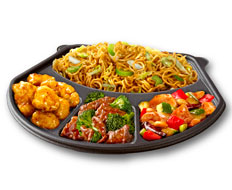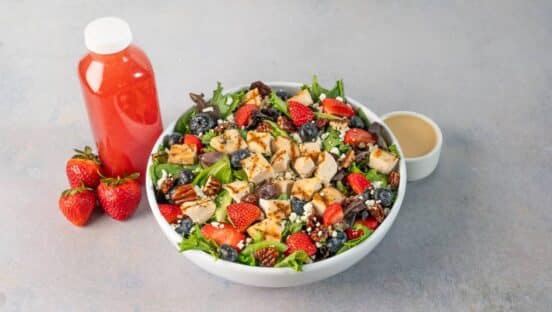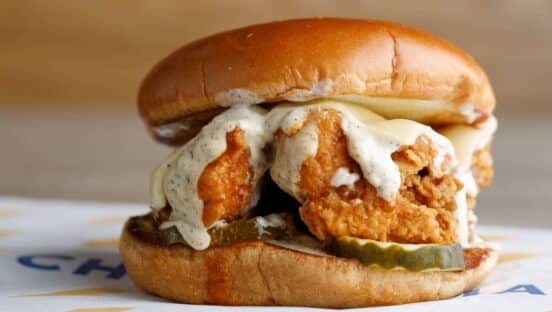Panda Express is testing a replacement of its traditional two-entrée meal to compete with the growing number of limited-service Asian companies launching in the U.S.
The new option, dubbed the Paw Plate, went to trial March 7 in six markets and includes three entrées, but at smaller portions than the concept’s larger, pricier three-entrée meal.
“Customers told us they wanted more variety,” says Rich Yoo, vice president of innovation at Panda Express. “The Paw Plate helps our guests enjoy dining more like a traditional Asian meal that is eaten family style, with the opportunity to experience more entrées.”
The new menu option is named for its recyclable container, which is in the shape of a panda’s paw. The plate has a trio of equal-sized compartments for entrées and a larger compartment for rice or another side.
The Paw Plate contains the same amount of food as its two-entrée predecessor and is priced identically. But instead of two 6-ounce portions for $6.25, there are three 4-ounce portions.
The trial is being conducted in 56 stores in Bakersfield and Santa Barbara, California; Yakima and Spokane, Washington; Columbus, Ohio; and Indianapolis. The test is backed by full advertising and marketing in half of the markets.
“We are behind this in a big way,” Yoo says.
That’s no surprise. Adopting the Paw Plate systemwide would mark a tidal change for Panda Express, particularly because the two-item plate “is our bread and butter and the way most guests access our platter,” Yoo says.
But the new option might also represent Panda Express pushing back against a growing stream of competitors in the Asian limited-service segment. In addition to Panda Express, which has more than 1,400 units in 42 states, other established companies include the likes of Pei Wei Asian Diner, Pick Up Stix, and LeeAnn Chin.
There are also plenty of newcomers, like Chipotle Mexican Grill’s offshoot, ShopHouse Southeast Asian Kitchen, as well as countless food trucks innovating in the space.
Asian food is becoming more popular because of taste and value, and “it is perceived as a fresher, healthier option,” says Dennis Lombardi, executive vice president at Columbus, Ohio, retail research and design firm WD Partners.
The food is generally lighter in terms of protein, and that projects a healthier image, he says.
Panda Express restaurants typically offer 16 entrées. In the past, the only option for customers seeking more variety than the two-entrée plate was the three-entrée meal, which some diners found too large and too expensive.
With the Paw Plate, guests can get their favorite entrée, a second entrée they might sometimes choose, and then “a third that may become their new favorite,” Yoo says. “It gives them a chance to try new things.”
Trying new things could also build more repeat visits, he says.
The Paw Plate container, which is microwaveable and dishwasher safe and is manufactured by Genpak, is an added bonus because it could appeal to the growing base of consumers interested in sustainability. Yoo says there is early evidence that customers are taking the packaging home and reusing or recycling it.
“Customers can feel better eating at Panda, because we are paying attention to the packaging,” he says.
The container is an improvement over Styrofoam, says Michael Oshman, CEO and president of the Green Restaurant Association, based in Boston. He says sustainable packaging options are a good way to initiate a broader green plan.
In addition, he says, both consumers and employees have shown a preference for sustainable operations.
“We've been around 22 years, and in the past four or five years, the market has shifted and matured,” Oshman says. “Green has become more mainstream.”
The new packaging is more expensive than Styrofoam, Yoo says, which is another reason Panda Express is paying close attention to the test.
“We expect increased visits by guests to pay for the incremental costs, and we believe [the Paw Plate] has the kind of value addition they want,” Yoo says.
The company has not put a time limit on the test, Yoo says, and does not know if or when the Paw Plate will roll out nation-wide.











